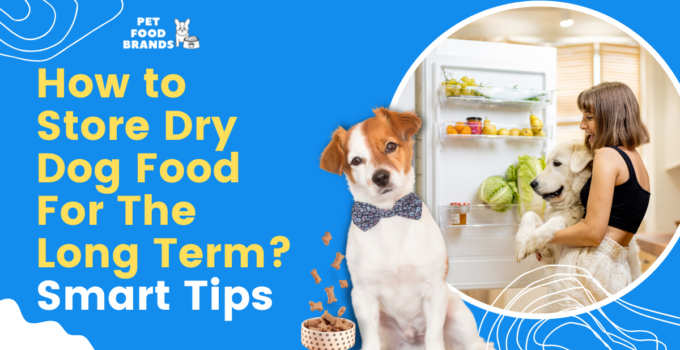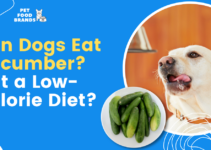In this article, I will answer your question on how to store Dry Dog Food for a long time. When discussing this topic, I will look at three key points: protecting our food from heat, moisture, and air.
But you might ask, “My dog doesn’t refuse the dry food I feed him after storing it for a long time?” Please be aware that according to research, oxidized fatty acids can make food go rancid, which will then cause organ damage and inflammation.
How you store this food will greatly affect how well it stays fresh and maintains its ideal nutritional value. Good thing I’ve come up with 6 smart tips you can use to store your dog food for a long time!
Tips For Storing Your Dry Dog Food
As promised, in this section of the article, I will be giving you some important tips on how to store your dog food. This will ensure the food remains fresh and nutritious for much longer.
1. Keep Dog Food in an Airtight Container
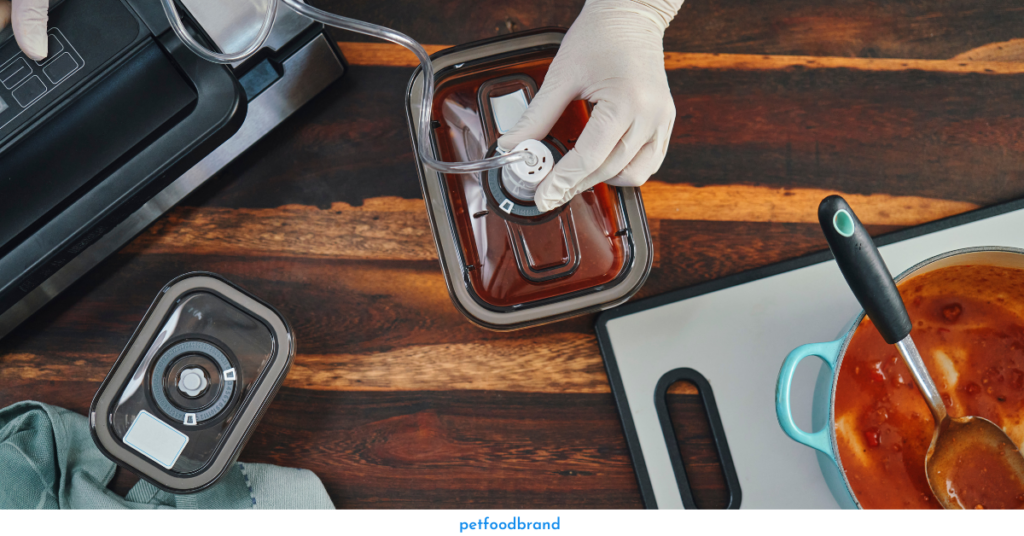
Choose a location that’s cool and dry. I like storing my dog food treats in an airtight container. These here are 60-pound containers. I like them because there’s plenty of room. Storm also makes them in a 40-pound container. I like airtight containers because they protect the food and treats from rodents and insects.
I’m not feeding kibble right now, but if I were, I would put the whole dog food in here before opening it. I see many people using these airtight containers, but they don’t use them properly. They pour the whole bag of dog food in. There’s a problem with that.
The oils on the dogs will start lining the inside of the container, and those will start going rancid over time. And every time we pour a new bag of dog food in, that starts contaminating what we put in.
The other reason is simply pouring that whole bag in is exposing the whole bag to air. The oxygen in that air starts to break down that food immediately. It makes it go bad much quicker. If you’ve been doing that, take everything out, clean this out thoroughly with soap and water, and get all the remnants out of here.
When you buy your next bag of dog food, bring it in, working in whole. Once it’s in there, just cut the bag up at that point. Scooping the dog food out may take a little bit of work, but you can still get a large bag of dog food emptied without opening the bag.
2. Keep the Original Bag of the Dog Food
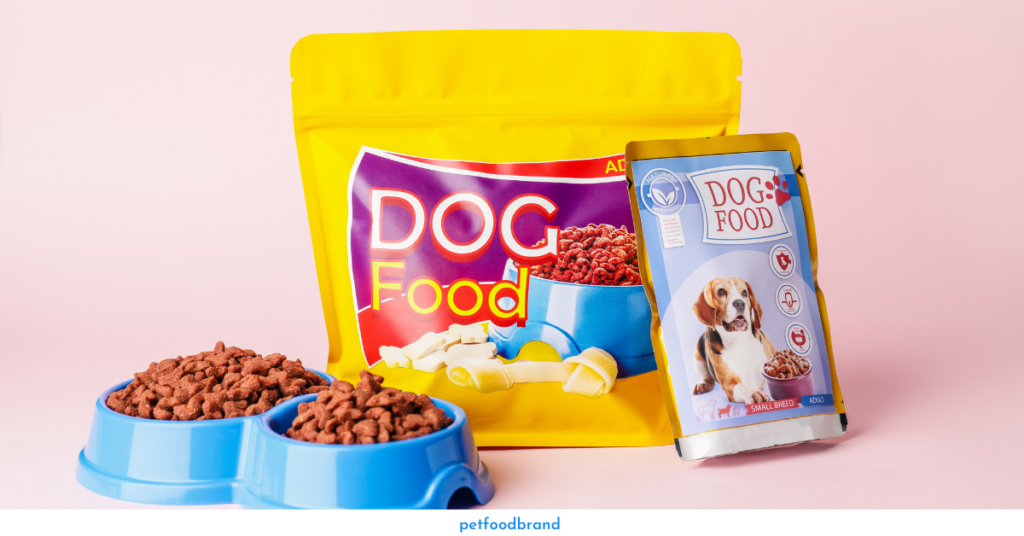
Another reason to put the whole bag in is to keep the original bag of food within. In addition to protecting it from the air, in case there’s ever a recall, we can pull that bag out. We can look at the lot number there, and we’ll know if the bag of food we’ve been feeding is subject to the recall.
The bag is designed to help keep the food fresh. There are also oils in the food, so you don’t want to get those oils to soak into the container. It may go rancid if you dump fresh food into it.
So, for any food or bags of treats I’m putting in here, if they don’t have an airtight seal on top, I want to make sure I’m rolling this down and using a bag clip to help keep the air and moisture out. And I’ll store it back in there.
Keeping the bag sealed as tight as possible keeps out humidity and air. If that humidity and air get inside the bag, it can put the food at risk of bacterial contamination.
3. Don’t Store Dog Food in Sunlight
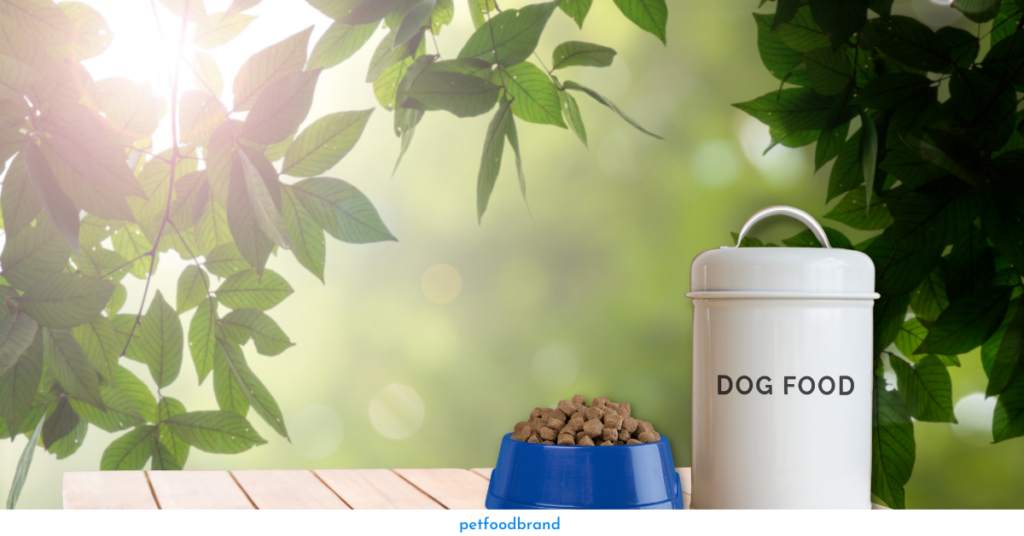
That, again, can raise the temperature in the bag, and humidity can start building up inside the bag, speeding up the food degradation and putting it at risk of bacterial growth.
For example, I wouldn’t store my pet food in our garage. It’s been so hot and humid all summer. It’s still hot and humid in October, and humidity could speed up food degradation.
The fridge is the best option if you’re looking to store dog food in your home’s driest and coldest place. If you have the freezer space, store large economy bags in there and serve straight from the freezer-protected bag of kibble.
4. Think of Dog Food Like Rice
When storing dry goods long-term, you must think about rice and how we do things for ourselves. We apply that to dog food.
Okay, now when we store things like rice long-term, we tend to store white rice more than brown rice or wild rice because brown rice and wild rice tend to have more fats. So they will have a lower shelf life than things with less fat.
A large 30-pound economy bag of kibble lasts a medium-sized dog roughly one month. But as soon as a bag of kibble is opened, the clock is ticking away on many of its ingredients, especially the fats. The nutritional value declines and fats oxidize every time the bag is opened. Oxidation happens when oil comes into contact with the oxygen in the air. Some of the fats in the food are highly sensitive to oxygen, and the oxidation makes fats go rancid quickly.
So you must check your fats and make sure about that. Things with fat in them will have a shorter shelf term.
5. Try Not To Buy Large Bags of Dog Food
One of the biggest problems is that pet parents buy large economy bags to save money. While antioxidants are included in the dry dog food, every time the bag is opened, the antioxidants fall prey to oxidation. And the longer a bag of kibble stands with air getting to the food, the more it degrades and becomes a long-term health hazard.
If you have space in your freezer, store large economy bags in there and simply serve straight from the freezer-protected bag of kibble.
6. Use Steel Containers
Let’s talk about containers. Containers are critically important because they are the thing that will hold whatever you’re putting in there and ensure that it preserves the food for the long term. And they’re not all created equal.
Steel containers can be expensive, but they can keep light, moisture, and critters out, allowing foods to last 25 or 30 years in storage. Also, steel can create a true oxygen barrier. All these qualities make this a great material to have as containers.
What Makes Dog Food Go Bad?
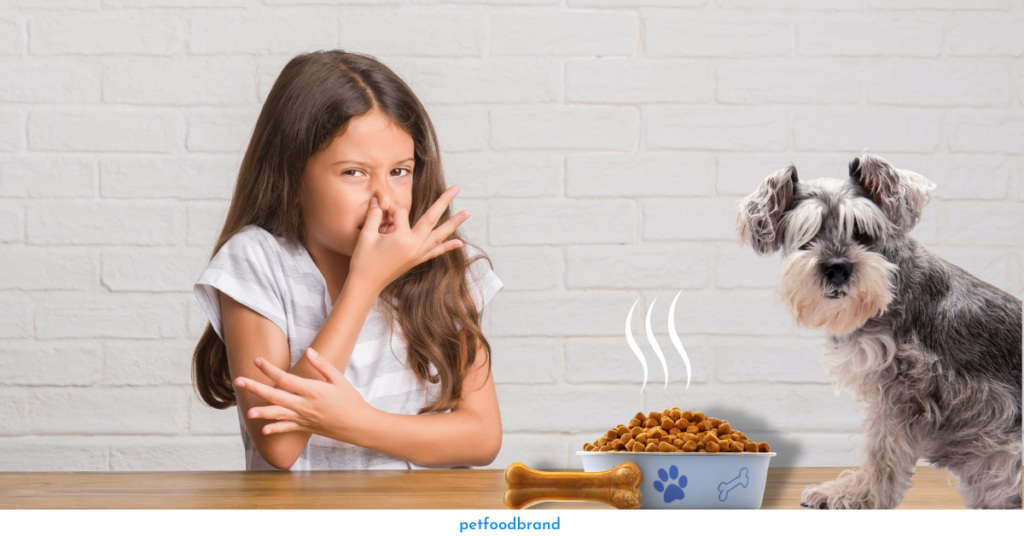
You may know that fatty acids must be included in dog food.
These can lower a dog’s blood pressure and maintain cardiovascular health and body structure.
In kibble, supplementing omega-3 oils is mainly done by adding fish meal and not fish oil due to the cost. Fish oil and fish meal added to form kibble are prone to oxidative processes and the formation of inflammatory ingredients.
In comparison to vegetables, long-chain omega-3 fatty acids sourced from fish are more likely to face oxidization.
What exactly is the oxidization of dog food? Well, in plain and simple terms, it’s when the food comes in contact with oxygen and starts to break down.
This process can make the dog food go bad quickly and rapidly. It’s why we like to store our dog food away from air, moisture, and heat.
A good storing option always creates an oxygen barrier between the outside and the inside of a container.
Some Last Words
The manufacturers make their food in bulk so that it may have already been stored for six months or more in different warehouses at different temperatures.
As a result, it can start degrading the nutritional value of the food and its freshness. These tips will help keep the food as fresh as possible when you get it home.
Also, you must follow the above tips regardless of where you buy your dog food, whether offline or online store.
Please share the article with other pet owners if you have found it helpful.

Ankita is a passionate pet lover and head of content at Pet Food Brands. With her extensive knowledge and research, she provides pet owners with top-quality information on dog food and nutrition. Her dedication to improving the lives of dogs makes her a leading voice in the industry.

